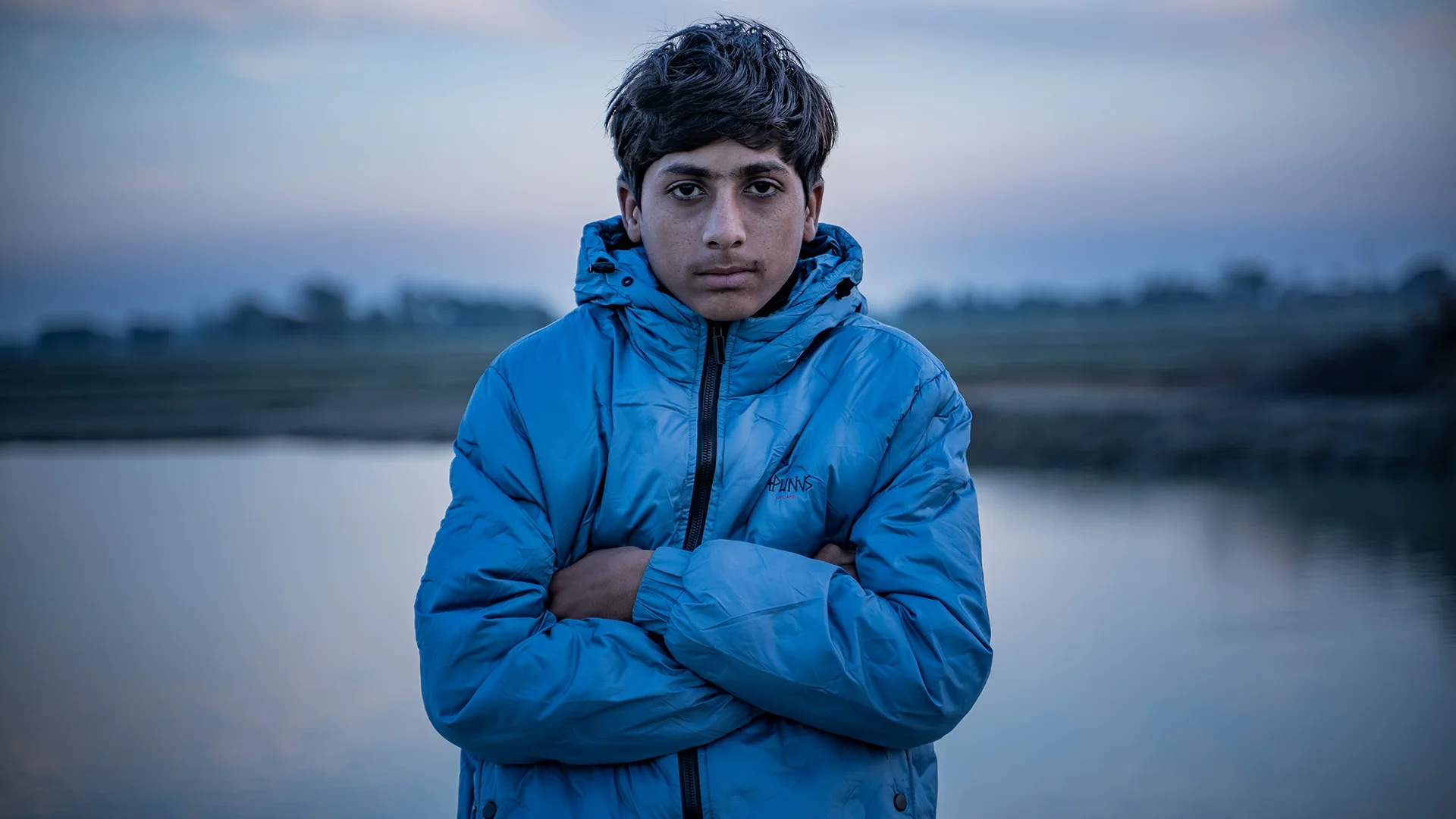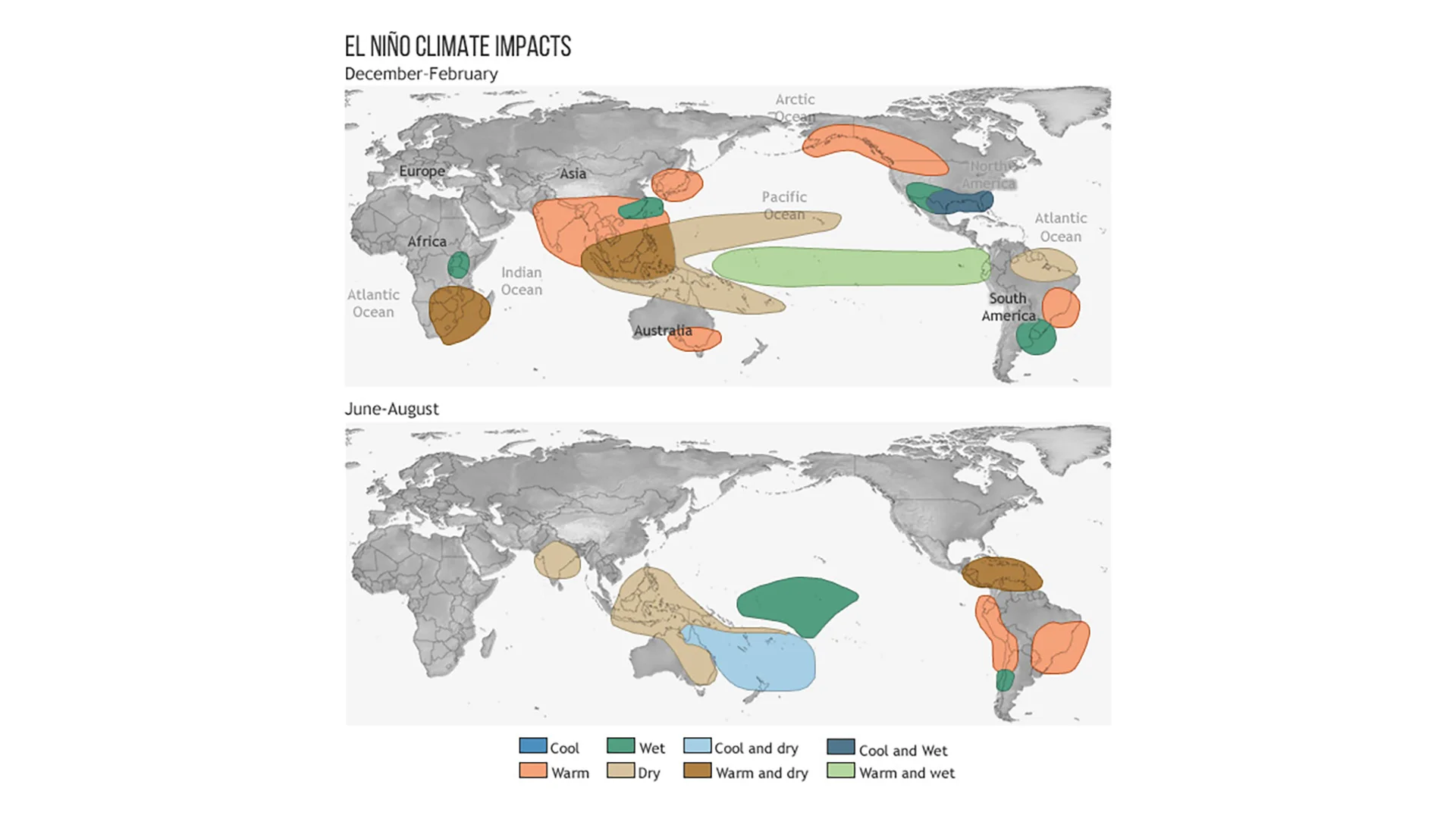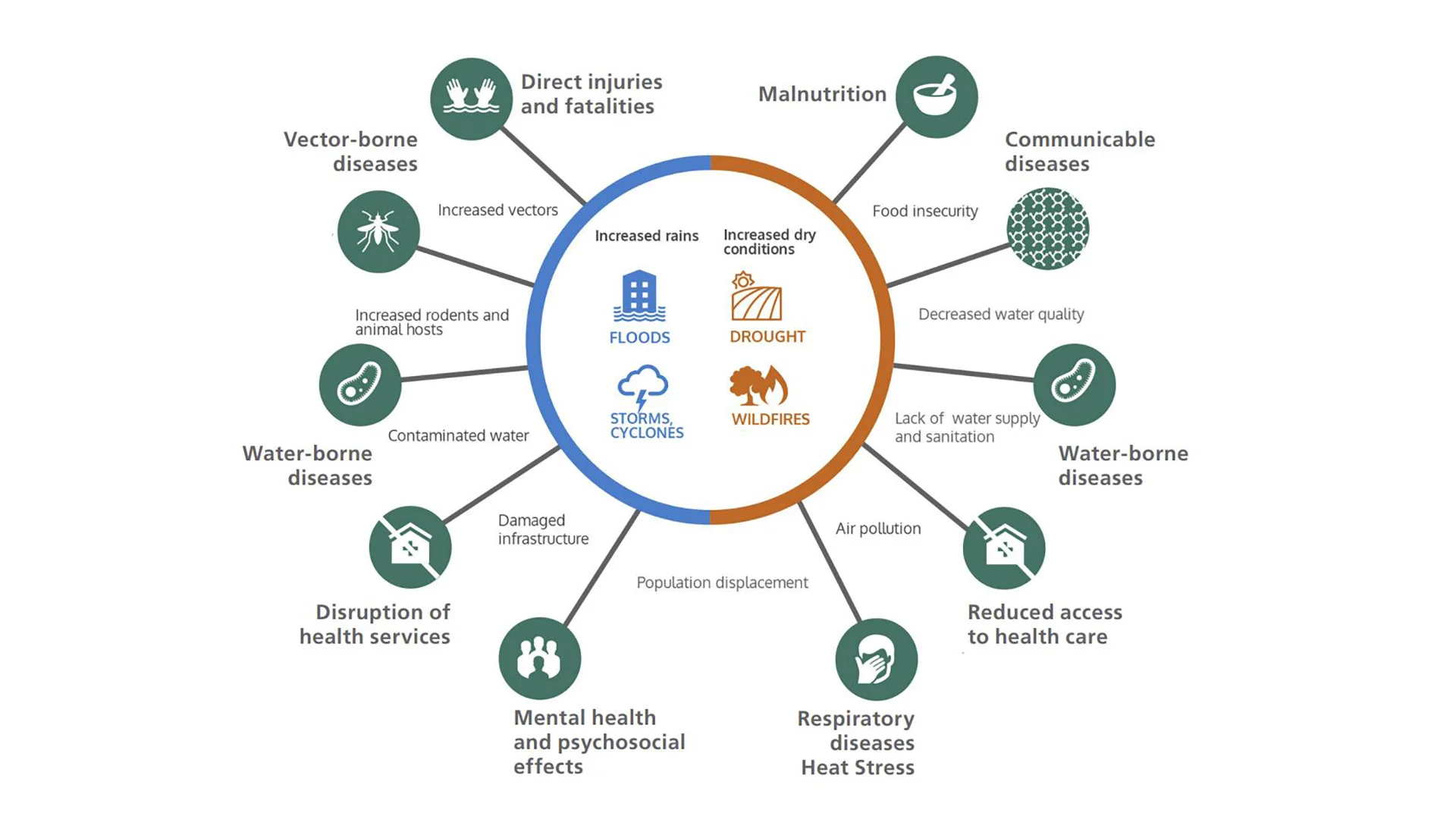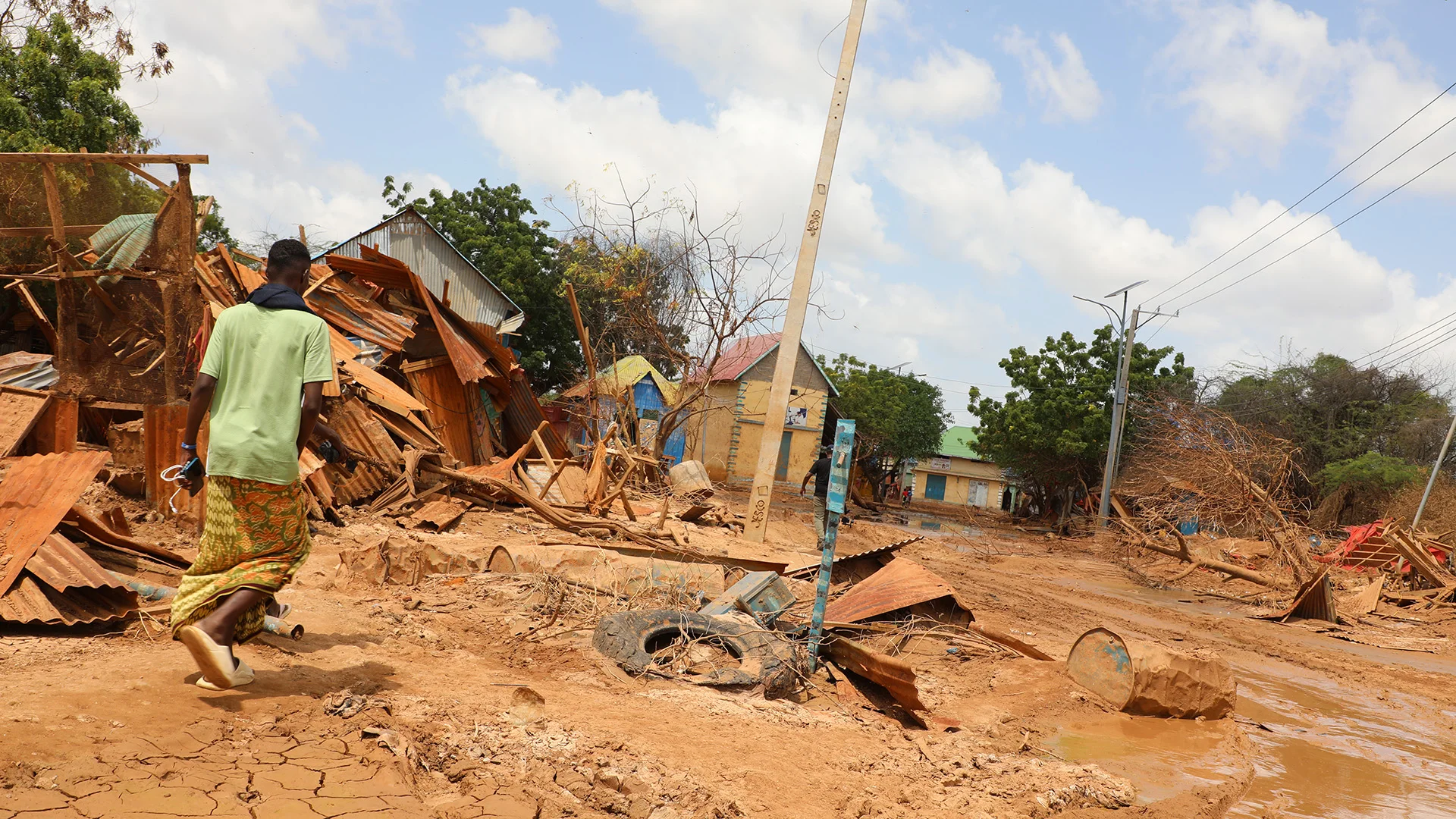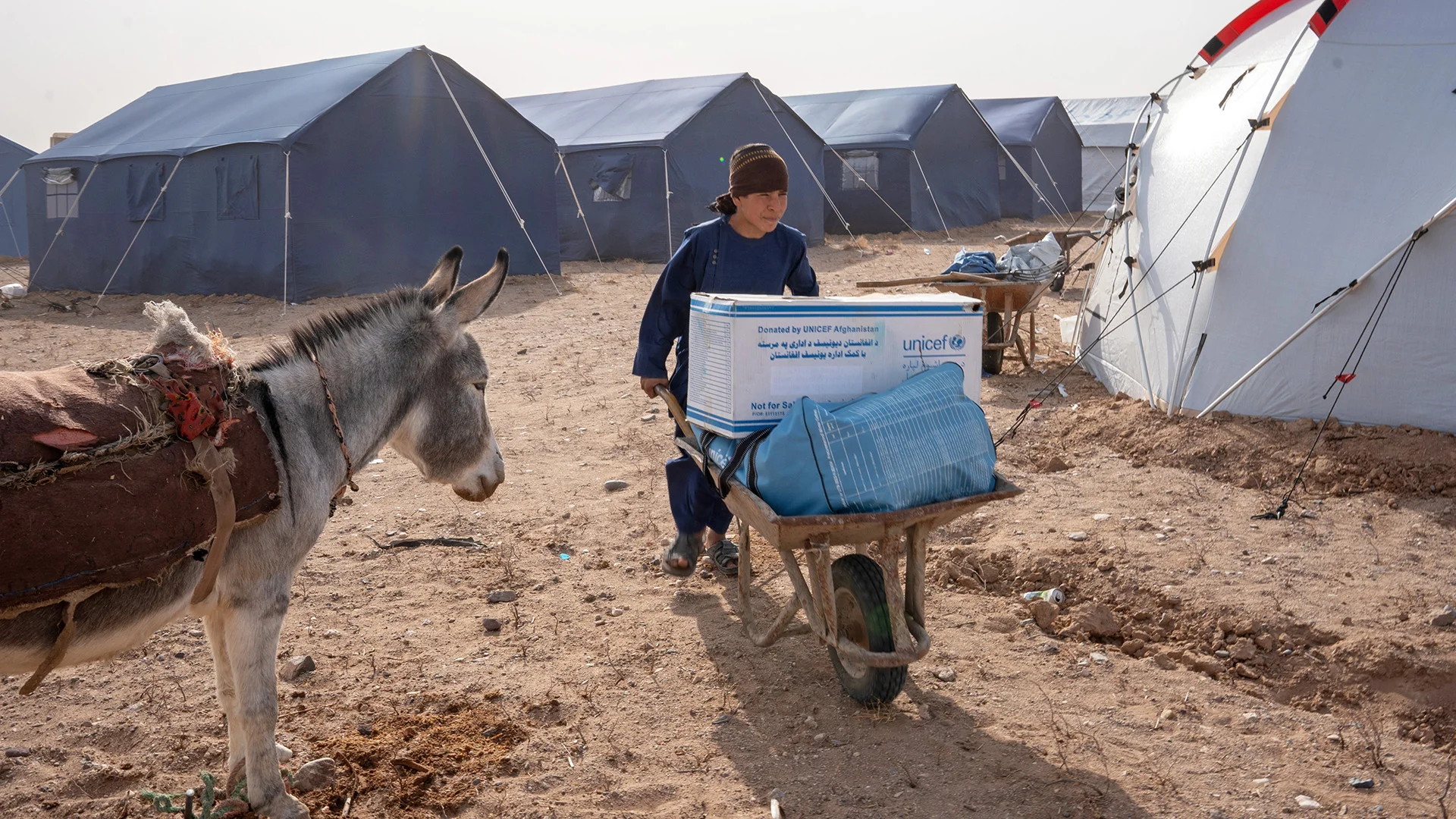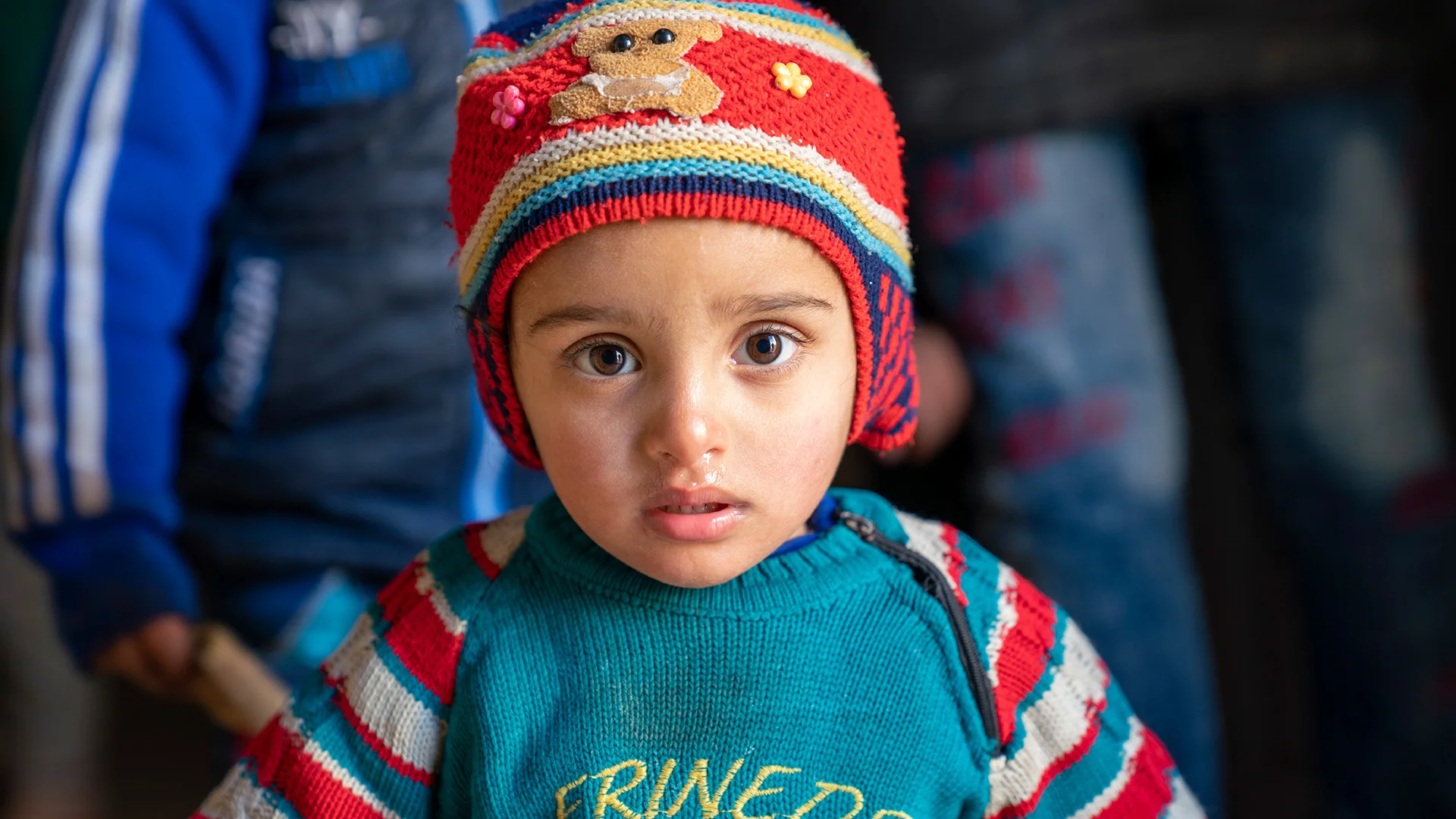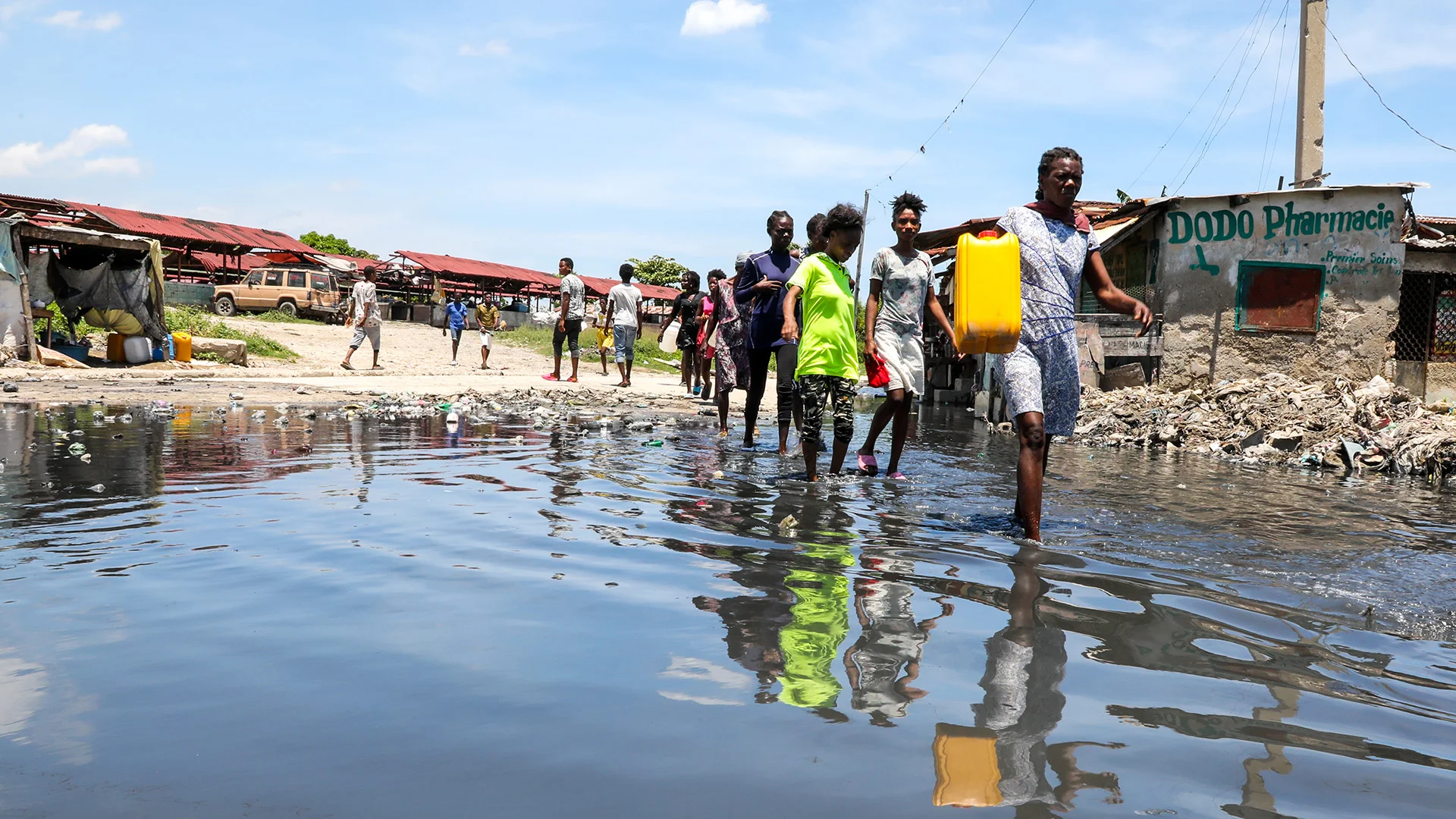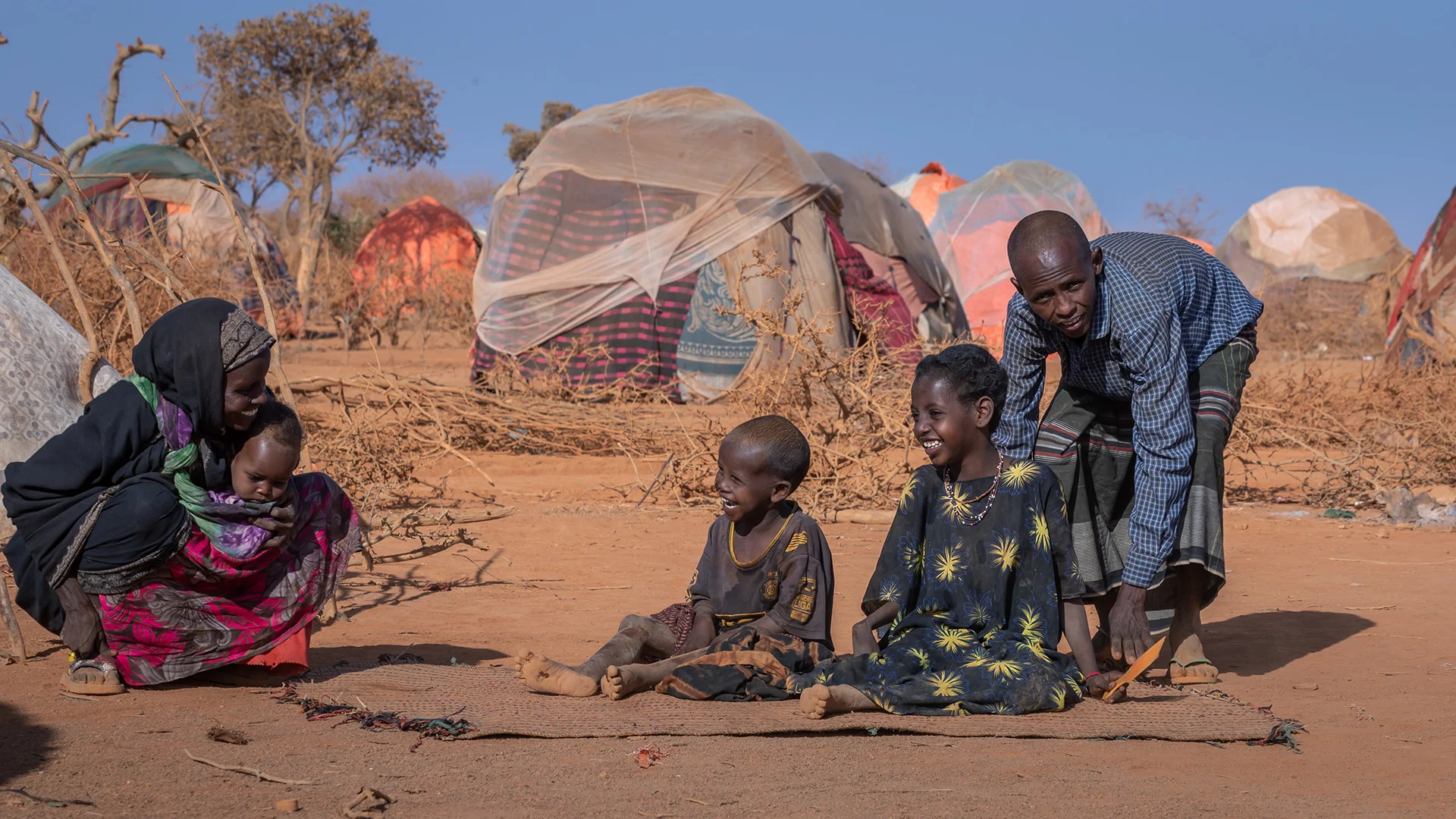El Niño threatens the lives of millions of children around the world this year with harsh winters, periods of heavy rainfall and extreme droughts. For children living in regions of conflict and turmoil, this combination could be devastating or even deadly. But just what does a severe El Niño event mean for children in crisis?
El Niño is a natural climate phenomenon in which ocean temperatures in the central and eastern Pacific Ocean near the equator rise to above-average levels. This warming causes a temporary rise in global temperatures and increases the likelihood of extreme weather events occurring in regions across the globe. El Niño has occurred eight times since 1980, most recently in 2015-2016.
A new El Niño season began in June 2023. It is expected to be one of the five strongest El Niño events in history, causing severe disruptions to global weather and climate patterns. In its severe form, an El Niño event means that dry weather gives way to massive flooding, and tropical humidity to devastating drought – the climate changes from its regular state into its extreme climatic opposite. The current El Niño is expected to reach its peak strength in January 2024 and continue until April 2024.
Risks for children
El Niño causes many places around the world to experience extreme weather events, including heavy rains, floods, cyclones and droughts. In the last six years, 43.1 million children became internally displaced due to extreme weather conditions. Today, one billion children live in climate zones classified as “extremely high-risk”: 160 million of them live in areas experiencing high levels of drought, and another 500 million children live in regions with frequent flooding. If the predictions about the severity of El Niño prove to be true, these children will be exposed to grave risks.
When El Niño causes unexpected or extreme seasonal changes, children are the first to suffer, especially those growing up amid armed conflict, poverty and political instability. But children in regions still recovering from earthquakes or cyclones also face immense challenges.
- El Niño and the rains and rising temperatures it brings result in various health risks for children: floods destroy schools and important transportation infrastructure.
- Droughts interrupt the school year, as children must help their families earn a living.
- The displacement of children due to climate events can lead to gaps in their education, as well as hunger and trauma.
- Children in countries in protracted crisis – like Afghanistan, Syria and Ukraine – are threatened by harsh winters and icy temperatures.
Anticipated effects: crop failures, poverty and hunger
El Niño has historically had far-reaching, grave consequences for people and the environment. This time, however, we are experiencing the climate phenomenon at a time when we are already facing a global polycrisis: food and energy crises, rising inflation, high debt and slowed economic growth are having impacts on the daily lives of countless people. El Niño could worsen the already existing negative impacts of the polycrisis on food prices, food security and poverty, thus increasing hunger and suffering around the world.
What is a polycrisis?
A polycrisis is more than individual, overlapping crises. It is an accumulation of interdependent global crises that mutually reinforce each other, the result being that their overall impact exceeds the sum of the impacts from the individual crises. Further instability can potentially strengthen a polycrisis and ultimately lead to system collapse.
- In the winter of 2024, El Niño is expected to affect precipitation and temperatures in the tropics and Sub-Saharan Africa. This could have negative impacts on fishing and rainfed agriculture.
- El Niño is expected to raise temperatures globally by more than 1.5 degrees Celsius between 2023 and 2024.
- El Niño negatively impacts crop yields for 25 percent of harvested areas worldwide.
- Generally, El Niño is increasing the global yield for soybeans, but reducing the global yield for maize, rice and wheat, although these impacts vary greatly from region to region.
- 60 percent of the global food supply comes from five countries strongly affected by El Niño – China, USA, India, Brazil and Argentina – meaning that even a moderate event can have a major impact on global food supply and prices.
- Many countries, especially in the tropics and Sub-Saharan Africa, are expected to experience economic losses (see Figure 2).
- A one-degree temperature increase during El Niño historically has raised global food prices by more than six percent after one year.
- El Niño could further exacerbate the already critical debt situations of some countries. 60 percent of low-income countries are in debt distress.
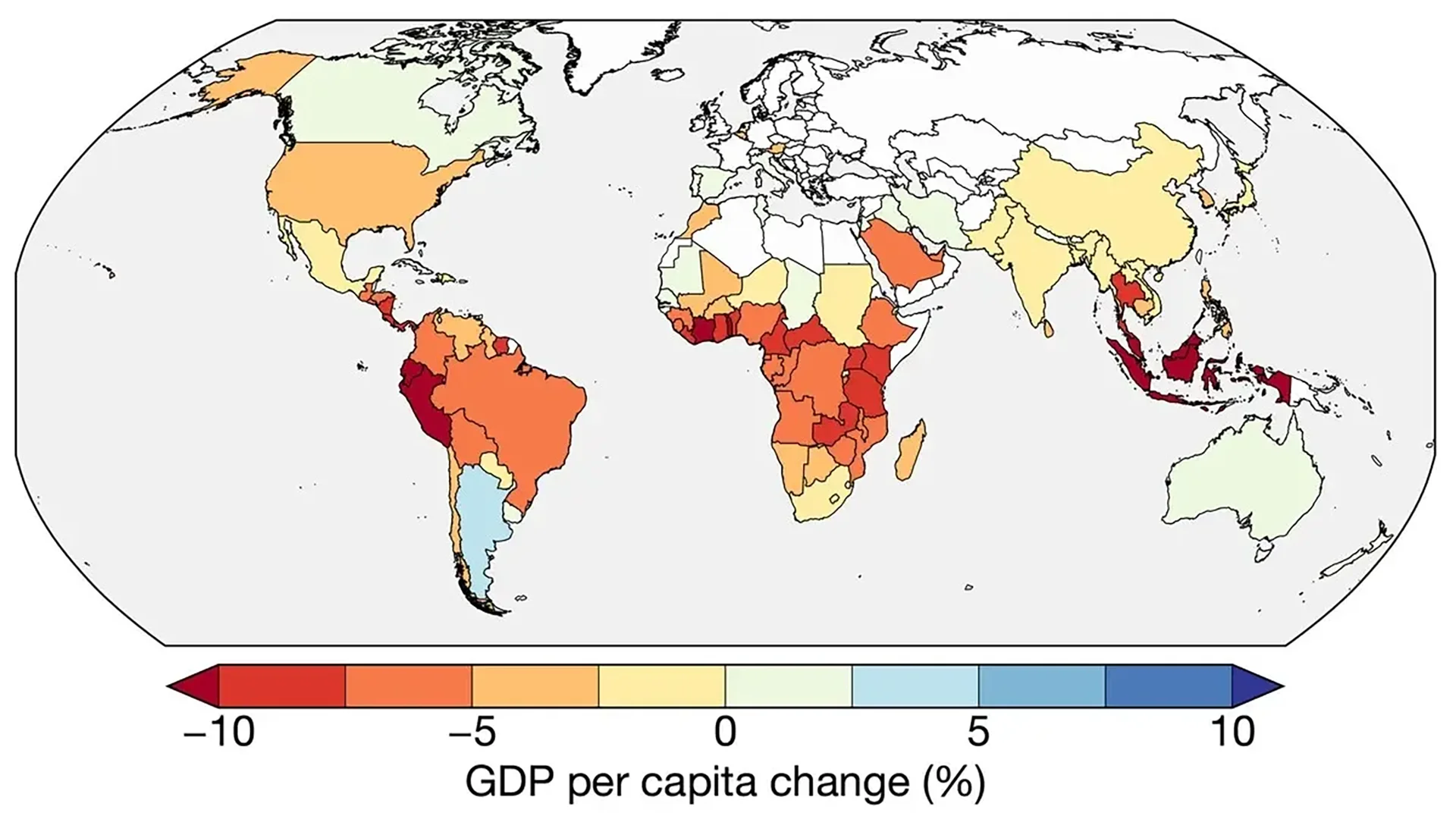
- Rising poverty: It is predicted that a strong El Niño will cause an additional 5.1 million people in the Philippines to fall into poverty.
- Women and poor rural families suffer disproportionately from the effects of El Niño.
- Increase in global food insecurity and hunger.
Weather events in connection with El Niño cause displacement – countries especially at risk include Ethiopia, Guatemala, Honduras, Mozambique and Sudan.
How are UNICEF and its partners helping?
Prevention, building climate resilience and early action are essential for an effective response to foreseeable humanitarian crises. Anticipatory measures should take full account of the potential effects on children and involve various sectors (including education, health, food, social protection, business, agriculture, food systems, security and energy).
The impacts of El Niño persist for years following the actual event, which means that an integrated approach is necessary to bridge the gap between humanitarian aid and development. This nexus goes beyond humanitarian aid and includes both long-term recovery and establishing sustainable resilience.
Adapting and expanding social programs to protect the poor and vulnerable is required, given the disproportionate impact on this group. Investment is also required to make social protection systems more shock-responsive in line with UNICEF Guidance.
Local effects of a global challenge
Syria
Winter conditions are generally very hard for the people of Syria, and this winter they could be devastating for millions of children because of the effects of El Niño. 90 percent of the Syrian population lives in poverty, with their lives negatively affected by economic instability, high food insecurity and rising food prices; almost 85 percent of the population cannot afford essentials. They are also still recovering from the catastrophic earthquake of February 2023. In all, seven million children urgently need humanitarian aid.
Haiti
Political turmoil, armed violence and recurring disasters bring pain and suffering to the children of Haiti. A socioeconomic crisis, rising inflation and fuel scarcity have caused millions of children to fall into poverty. Many of them are living without adequate nourishment or are threatened by the ongoing cholera epidemic. Flooding in both 2022 and 2023 put even more strain on a country that was already struggling. The unrelenting challenges of a strong El Niño event would worsen the crisis in Haiti and further reduce its children’s chances for a better future.
Ethiopia
Ethiopia is struggling with a multilayered crisis characterized by sociopolitical tensions in the Amhara and Somali regions as well as climate disasters, with 20 million people dependent of humanitarian aid. The country is fighting high malnutrition, low immunization coverage, cholera outbreaks, desert locust invasions and an insufficient water supply. The south and east are experiencing the worst drought in 40 years, while irregular rains disrupt agricultural production and strain water resources in other regions. Nearly 4.4 million people were forced to flee their homes and are now internally displaced. The expected impacts from El Niño include increased risk of flooding, which threatens infrastructure, agriculture and livestock while also increasing the likelihood of waterborne diseases such as cholera and malaria.
